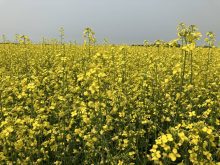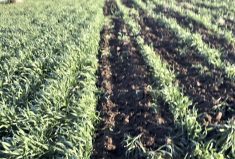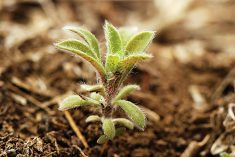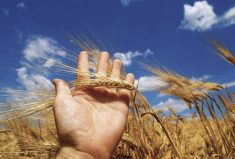Soil degradation in Canada is causing a huge economic loss — but few people are paying attention.
That includes farmers, even though degraded soil is significantly reducing their yields, according to University of Manitoba soil scientist David Lobb.
“Soil erosion accounts for a loss of about 10 per cent,” he said. “Farmers are only getting about 90 per cent of their yield because of soil erosion.”
That lost yield currently costs farmers about $3 billion a year, according to an economic analysis done by Lobb — a study he conducted to draw attention to the issue of soil health.
Read Also

New crop insurer policy enables easier startup for faba beans
Agriculture Financial Services Corporation updated its normals for faba beans, which may open the door for more Canadian producers to feel comfortable growing the pulse crop in the future.
“Politicians should look at this and say, ‘Huh, we’re investing about a million annually in soil conservation programs while we’re losing $3 billion a year — there’s a bit of disparity there,” he said in an interview. “They should be realizing that. They’re not yet.”
The Soil Conservation Council of Canada has taken a different approach to raising awareness of soil health — a clever campaign called Soil Your Undies aimed at illustrating how healthy soil should function.
But the issue still isn’t top of mind for most people, said the council’s executive director.
“Soils are getting talked about as part of operations, but not in terms of conservation and health,” said Jim Tokarchuk. “The programs and initiatives that support soil health are pretty slim.”
It’s actually worse than that, Lobb told the Senate agriculture committee earlier this month.
In his presentation to the committee, he said that in the 1980s, the federal government had 35 people collecting and analyzing soil data but that number has fallen to half a dozen and “it won’t be much longer and it will be zero.”
“This is a role that only the federal government can play and it is one it has completely neglected,” Lobb told the committee.
Soil health became a big issue in the early 1980s, he said, after a study found that erosion was costing farmers $1 billion a year (in today’s dollars) in lost yields. Not only has that figure tripled since then, but it does not include the cost of additional inputs to make up for lost fertility.
“It would be reasonable to assume that these costs exceed the cost of that lost crop yield,” he told the senators.
And while some producers have begun exploring practices such as cover crops or adding annuals to perennial forages, there’s also been an upswing in tillage (albeit the minimum-till variety) in recent years, said Tokarchuk.
“Our message to people is to do as little tillage as you can,” he said. “One of the fundamentals of keeping soil healthy is disturbing it less.”
Even limited tillage breaks down soil structure and negatively affects microbial life, he said.
“We ask you to think about it, do as little as you can, and disturb the biology of the soil as little as you can,” said Tokarchuk.
As well, conservation tillage doesn’t regenerate the soil, it simply stops wind and water erosion from happening, Lobb said.
“That’s how come we have areas that may not be experiencing much soil loss now, but because of the historical soil loss, they still have a major problem,” he said. “If you’ve lost organic matter and productivity, once you’ve lost a bit of it, it’s very difficult to get it back.”
Lobb is an expert on ‘tillage translocation’ — a type of soil erosion caused by tillage that slowly sees soil move downhill from knolls and high spots in the field. He spoke about that issue at FarmTech this winter and how landscape restoration (physically moving soil from those low spots to knolls and hills) can improve overall fertility in a field.
But more needs to be done to properly assess the problem of lost fertility and promote methods to reverse it, he said.
“It’s astounding how little we know about some of the things that are truly important in managing the soil resource,” Lobb told the agriculture committee.
Soil health and soil conservation isn’t just an issue for farmers, but for all of society, added Tokarchuk.
“We need to make soil health as important to all Canadians as air and water,” he said. “We have household conversations in Canada about air and water quality. Everyone is thinking about that.
“Soil is the third leg of the stool that people need to think about. If we don’t get urban people involved in that, we’re going to fail. We’re not going to have the pressure on urban governments, industry, and (other groups) for people to consider soil health to be equal to air and water in the minds of Canadians.”
Climate change presents an opportunity and a threat, Tokarchuk added.
On the one hand, increasing soil organic matter would sequester more carbon. On the other, “with higher temperatures and lower precipitation, it is more difficult to maintain soil organic matter,” he said.
Farmers need to push to make soil health a priority, said Lobb, adding his study showing they are losing $3 billion a year in reduced yields demonstrates the problem wasn’t fixed by reduced tillage and summerfallow.
“Farmers need to be aware of this story because it impacts their bottom line,” he said. “Politicians need to realize it because they need to make some investments into the industry.”
– With staff files
















